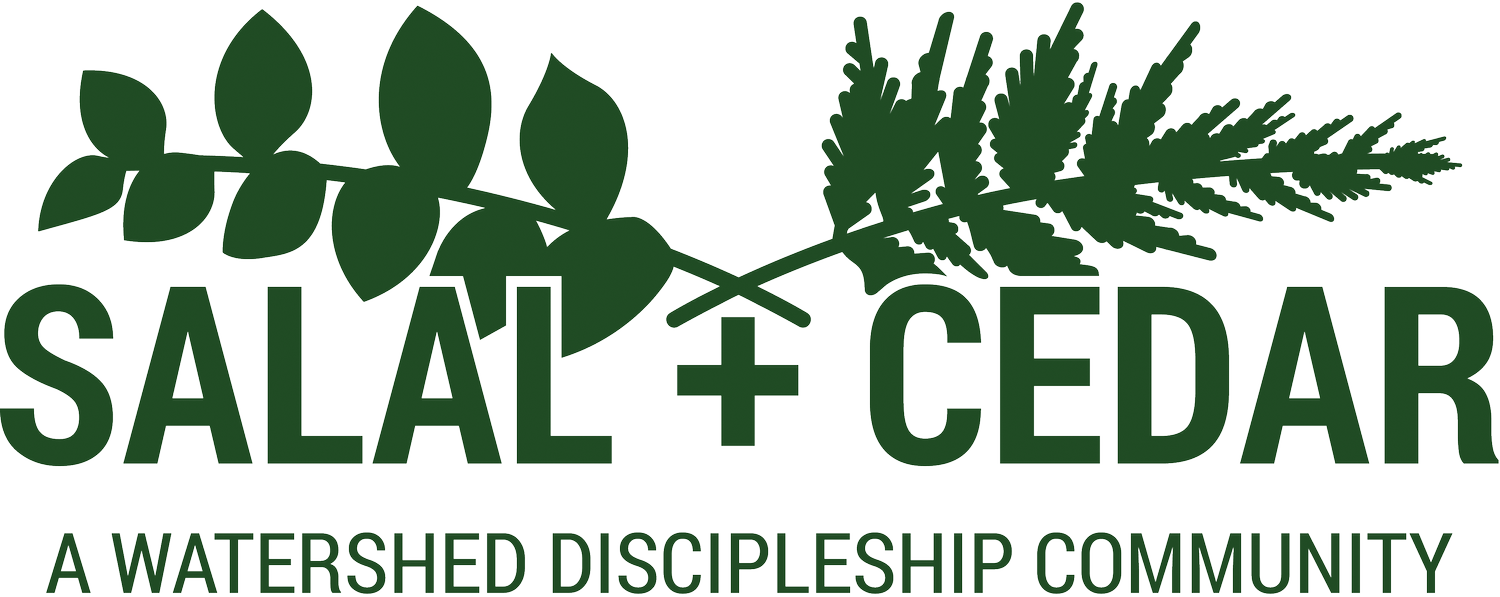Ascension: Where Heaven and Earth Meet
The Salal + Cedar community, which hosts and curates Wild Lectionary, seeks to grow a culture that values rest and a sense of “enough” over scarcity. This week we did not have a contributor for Wild Lectionary so rather than making that an extra task for staff, we offer this shorter resource.
The Ascension, told in each of Luke and Acts functions as something of a literary hinge between those two volumes. There are a number of elements that resonate for readers in a time of climate crisis and lend themselves to homiletic engagement:
The Ascension has apocalyptic elements echoing the lifting up of the Human One in the book of Daniel. How might this change in how Jesus was present with them have impacted a community that had already experienced his crucifixion? How do we experience successive crises?
Jesus is received by a cloud, a sign in the Hebrew Bible of the presence of God. Clouds are water vapour. Repeatedly in scripture God is associated with water, storm, power over water. Water exists on earth in each of the three phases of mater: liquid, solid, gas, a metaphor that is sometimes used for the Trinity.
Jesus says that his kingdom will be restored “to the ends of the earth” and the two men who appear predict his return, both of these promise a renewal of Creation and have the potential for human participation in that. What are some examples of communities restoring/renewing Creation?
The disciples desire for a triumphant messiah “It’s great that you’re back from the dead but now are we going to kick some Roman butt and get what we deserve?” is countered by the promise of a very different kind of power. With the ascension the disciples have the choice to keep looking up to heaven or to looking around at one another, the earth and our creature companions.
Art that depicts the ascension often shows a community gathered in wonder around Jesus’ final footprints and the Chapel of the Ascension in Jerusalem surrounds a stone which is said to bear the footprint on Christ. There is a beauty in this tradition of venerating stone where heaven and earth meet. How might we find that meeting place in all the earth?
The feast of the Ascension also has an agricultural tradition: celebrated until the Friday before Pentecost, just as Pentecost (the Jewish Feast of Shavuot) was originally a blessing of first fruits, in the Christian tradition fields have been blessed both on Rogation Day and Ascension.
Sources and Resources
Kate Alexander, A Sermon for Ascension Day (in a stormy world)
https://christchurchlr.org/sermons/2022/5/27/sermon-for-ascension-day
Ascensiontide in Climate Emergency (a short order of service)
https://ourcommonprayer.org/ascensiontide-in-climate-emergency/
Robert Lethem, The Ascension of Christ
https://www.thegospelcoalition.org/essay/ascension-of-christ/
Ched Myers, The Feast of the Ascension, Memorial Day and Doubling Down on the Incarnation
Abigail Patterson, Ascension Day Guest Post. Restoring Creation: a Christian perspective on rewilding
Lydia Wylie-Kellermann, Dinosaurs, Ascensions and Hope: Believing in the Absurd
Kreg Yingst, Art and reflection on the celtic saint Conaire, finding the place of her resurrection.
https://www.etsy.com/ca/listing/831749479/finding-ones-resurrection-conaire-celtic
